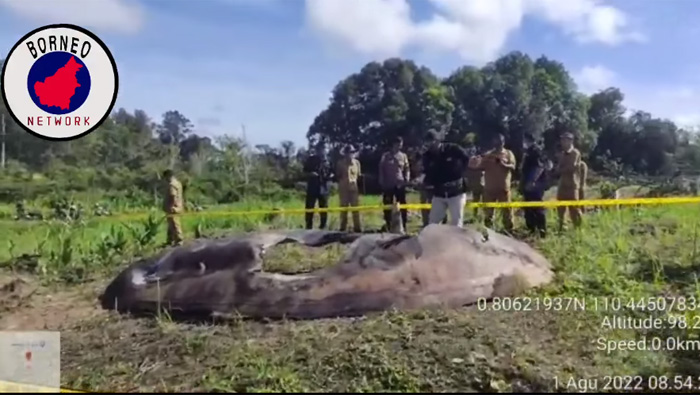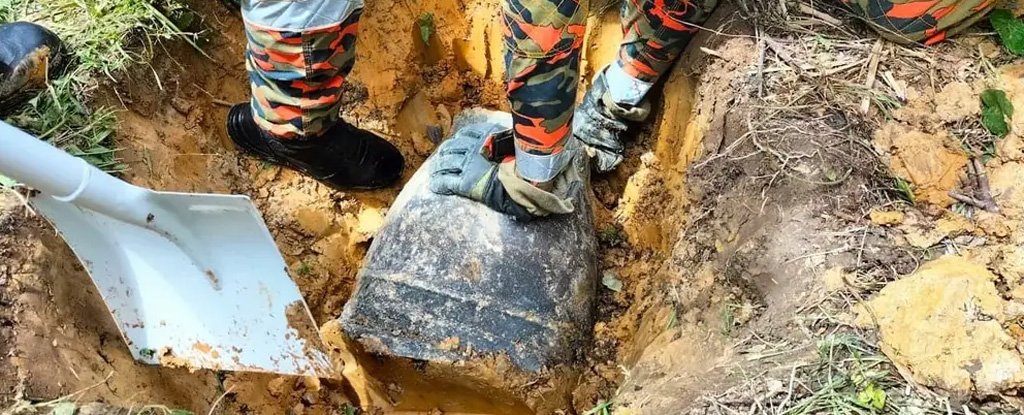Products You May Like
Mysterious large pieces of wreckage were discovered across Southeast Asia over the weekend, and evidence is growing that they came from a Chinese rocket booster that fell to Earth uncontrolled.
The booster of China’s 25-ton Long March 5B rocket pushed a new segment of the country’s space station into orbit in late July.
Then, instead of pushing itself into the Pacific Ocean – a standard practice called controlled reentry – the booster entered Earth’s orbit and slowly lost altitude over the course of a week, ensuring that it would fall randomly in an unpredictable location.
On Saturday, the booster succumbed to gravity and fell to Earth, breaking apart in the atmosphere. Soon photos of scattered objects that appear to be parts of the rocket emerged from Indonesia, Malaysia, and the Philippines – along the path of the booster’s uncontrolled fall.
Only China can officially confirm that those pieces belong to its rocket booster, but orbital-debris experts say they have no doubt that the mystery objects are chunks of Long March 5B.
“They sure look like rocket parts to me,” Ted Muelhaupt, a consultant for the Aerospace Corporation’s Chief Engineer’s Office, told Insider, adding, “I’ve got no reason to dispute that it’s pieces of this rocket.”
There’s a roughly 10 percent chance that debris will hit one or more people within a decade, according to a study published in the journal Nature in July.
Even if they don’t strike anybody, pieces of spacecraft that have fallen through the atmosphere are dangerous to approach because rocket fuel can linger on them.
Photos suggest the booster disintegrated piece by piece as it fell
In the village of Pengadang, near Balaikarangan, on the Indonesian side of the island of Borneo, locals discovered a large rounded object resembling the Chinese rocket’s core stage. The image above comes from Borneo News Network footage.
“There’s a picture of the big piece at the end of the fuel tank sitting on a field that’s very convincing. It’s the right diameter. It looks like a piece that sort of survived reentry – and is right on the path of the reentry,” Jonathan McDowell, an astrophysicist at the Harvard-Smithsonian Center for Astrophysics, and avid tracker of objects in Earth’s orbit, told Insider.
 A mysterious metal object discovered in Balaikarangan, Indonesia. (Malaysia News Agency)
A mysterious metal object discovered in Balaikarangan, Indonesia. (Malaysia News Agency)
Muelhaupt agreed that object looks like the dome of a fuel tank.
Two smaller pieces of debris were discovered in the small towns of Batu Niah and Sepupok in Sarawak, on the Malaysian side of Borneo, according to the Borneo News Network and The Star, a Malaysian news outlet.
Photos show “a little piece of metal dug in the ground, which may well be a bit of the rocket, but it’s just too hard to tell,” McDowell said.
The rocket’s launch dropped debris, too
Images circulated on China’s social media platform Weibo claimed to show pieces of the rocket’s fairing, which falls away during launch, in the Philippines’ Mindoro Strait. The photos, which Insider has not independently verified, show people pulling panels from the water marked with the same Chinese flag and blue space-agency symbol that are on the rocket fairing.
On Wednesday, the Philippine Space Agency released a statement saying the torn metal sheet found by fisherman off the coast of Mamburao was part of the rocket’s fairing. The agency also said that parts of the falling booster may have dropped off the coast, in the Sulu Sea.
McDowell and Muelhaupt also said they believe these images show parts of the rocket fairing, dropped during launch.
Then, when the rocket’s booster fell from space, its descent path carried it right over the Mindoro Strait.
“This means we’ve been hit twice by debris from this launch: at the beginning, and at the end of the rocket’s flight,” Jay Batongbacal, a professor at the University of the Philippines Institute for the Maritime Affairs and the Law of the Sea, told Philippine news outlet the Inquirer. “This shows that the risk is higher for us, because we are under the flight path of most Chinese rocket launches,” he said.
However, no government agency has reported debris from the uncontrolled fall in the Philippines.
This is the third time China has launched a Long March 5B rocket and allowed its body to fall to Earth uncontrolled. In May 2021, pieces of another Long March 5B landed in the Indian Ocean. And in May of 2020, another launch ended in an uncontrolled fall that dumped debris near two villages in Ivory Coast, leading to reports of property damage.
This article was originally published by Business Insider.
More from Business Insider:
